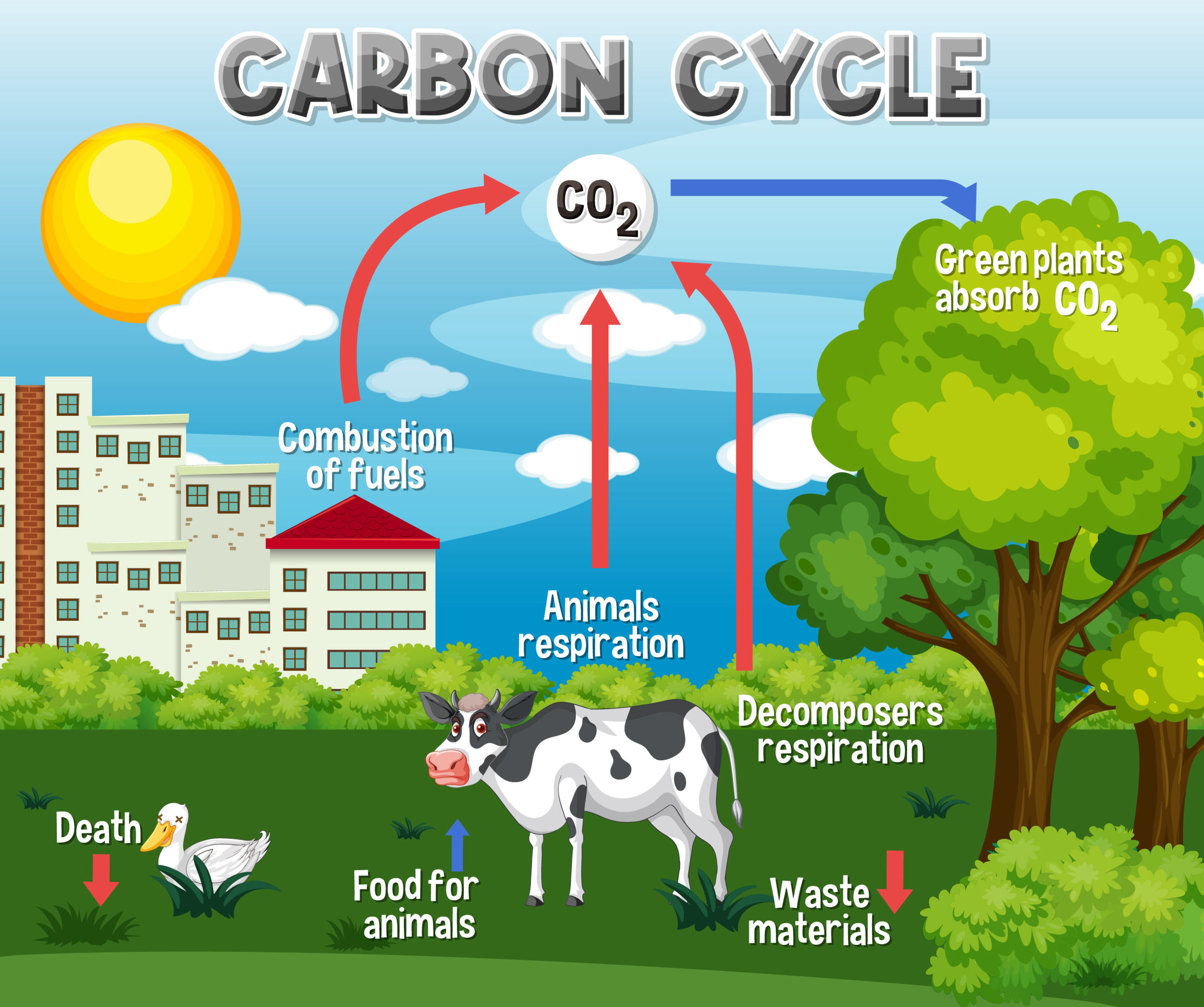The carbon cycle, like an intricate orchestra, consists of a series of meticulously coordinated processes, each playing its part in maintaining the harmony of our planet. These processes involve the transformation of carbon in various forms, with the key players being photosynthesis, respiration, decomposition, and combustion.
Photosynthesis is the virtuoso of the carbon cycle. It's the process by which green plants, algae, and certain bacteria absorb carbon dioxide (CO2) from the atmosphere and, in a remarkable alchemy, convert it into oxygen (O2) and carbohydrates. In this magical act, carbon is drawn from the air and incorporated into the very fabric of life, nourishing the entire ecosystem.
Respiration, the counterpart to photosynthesis, is the release of CO2 by living organisms, including plants, animals, and microorganisms, as they utilize the energy stored in carbohydrates and other organic compounds. This release is a necessary exhalation, returning carbon to the atmosphere.
Decomposition serves as the stage for recycling. When plants and animals die, their organic matter is broken down by decomposers—bacteria, fungi, and other microorganisms. Through this process, carbon-rich organic material is transformed back into simpler compounds, releasing CO2 in the process. It's nature's way of ensuring that nothing goes to waste, and carbon is continuously recycled.
Combustion is the dramatic crescendo in the carbon cycle. It occurs when carbon-rich materials, such as fossil fuels or forests, are burned. This process rapidly releases carbon stored over geological timescales into the atmosphere as CO2. While essential for warmth and energy, excessive combustion contributes significantly to the buildup of greenhouse gases and, consequently, climate change.
Understanding these processes is only part of the story. Equally important is comprehending how carbon traverses the Earth's interconnected systems. Carbon moves through a complex web of exchanges between the atmosphere, oceans, land, and the organisms inhabiting them.
Carbon, in the form of CO2, constantly circulates between the atmosphere and oceans. The oceans act as a colossal sink for carbon, absorbing vast quantities of CO2 from the air. This transfer not only helps regulate atmospheric CO2 levels but also influences the acidity and health of marine ecosystems.
On land, carbon interacts with forests, grasslands, and soils. Trees, for instance, absorb CO2 during photosynthesis, storing carbon in their biomass and roots. Forests become invaluable carbon sinks, sequestering carbon for years to centuries. Soils, too, play a crucial role, storing vast amounts of carbon in organic matter. Proper land management practices can enhance carbon storage in these terrestrial reservoirs.


Follow Us on Instagram